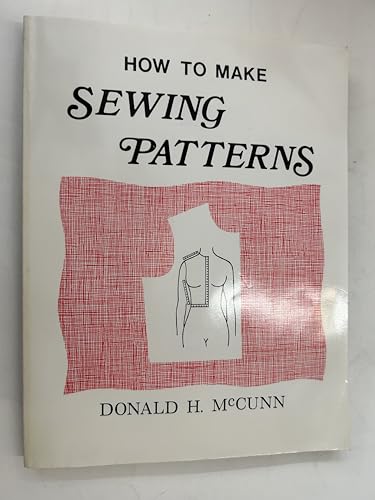Sewing is more than just a craft—it’s a vibrant thread that weaves together cultural identities across generations. Whether you’re humming through a traditional pattern or stitching modern designs, you’re part of a rich tapestry that preserves diverse heritages. Every needle and thread connects you to stories and artistic expressions that have stood the test of time.
In a world that’s constantly changing sewing serves as a bridge between the past and present. By embracing this timeless art you not only create beautiful garments and textiles but also help safeguard cultural narratives that define communities worldwide.
Importance Of Sewing In Cultural Heritage
Sewing maintains cultural heritage by preserving traditional techniques and designs. You transfer patterns and skills across generations, ensuring unique cultural identities endure. Traditional garments feature specific stitches and motifs that represent community values and histories. By engaging in sewing, you keep these symbols alive and relevant today.
Sewing also fosters community and continuity. You connect with ancestral craftsmanship, bridging past and present through each creation. Local sewing traditions support economies by sustaining artisanal businesses and promoting cultural tourism. Additionally, sewing workshops and classes educate younger generations, encouraging them to embrace and continue their cultural heritage.
Key Contributions of Sewing to Cultural Heritage
- Preservation of Traditional Techniques: You maintain age-old sewing methods that define cultural identities.
- Symbolic Representation: Unique stitches and patterns convey historical and social narratives.
- Economic Support: Artisanal sewing promotes local economies and sustainable livelihoods.
- Educational Value: Teaching sewing skills ensures the transmission of cultural knowledge.
- Community Building: Collaborative sewing projects strengthen communal bonds and shared heritage.
Examples of Sewing’s Cultural Impact
| Culture | Traditional Garment | Key Sewing Technique |
|---|---|---|
| Japanese | Kimono | Sashiko stitching |
| Mexican | Rebozo | Embroidery with vibrant colors |
| Navajo | Blankets and Rugs | Navajo weaving patterns |
| Indian | Sarees | Zari and zari embroidery |
These examples illustrate how sewing preserves distinct cultural identities and fosters a deeper understanding of diverse heritages.
Historical Significance Of Sewing Techniques
Sewing techniques embody cultural identities and preserve historical traditions.
Traditional Patterns And Motifs
Traditional patterns and motifs illustrate cultural narratives and values. Japanese sashiko stitching, Mexican rebozo embroidery, Navajo blanket weaving, and Indian zari saree designs showcase unique visual languages. These elements retain community heritage and communicate historical stories.
Transmission Of Skills Across Generations
Transmission of skills across generations sustains cultural sewing practices. Artisans teach younger members through workshops and family mentoring, passing down specialized techniques. This knowledge transfer ensures traditional methods and designs endure, allowing each generation to uphold and innovate their cultural heritage.
Sewing As A Form Of Artistic Expression
Sewing transforms fabric into unique artworks, allowing you to showcase creativity and cultural identity. Through various techniques and styles, your sewing projects reflect personal and communal narratives.
Techniques Enhancing Artistic Expression
- Embroidery adds intricate designs and patterns, enabling detailed storytelling on textiles.
- Appliqué incorporates fabric pieces to create layered, textured images that convey complex themes.
- Quilting combines multiple fabric layers, offering a canvas for diverse artistic motifs and color schemes.
- Patchwork assembles different fabric segments, resulting in visually dynamic and symbolic compositions.
Styles Representing Cultural Identity
- Traditional motifs link your work to specific cultural heritages, preserving ancestral art forms.
- Modern interpretations blend contemporary aesthetics with classic techniques, fostering innovation while honoring traditions.
- Custom patterns allow personalized designs, ensuring each piece reflects individual artistic vision and cultural significance.
Tools Facilitating Creative Expression
- Variety of stitches provide different textures and effects, enhancing the visual appeal of your creations.
- Color palettes enable the expression of emotions and themes through strategic color choices.
- Fabric selection offers a range of textures and weights, allowing for versatile artistic applications.
Sewing as artistic expression not only results in beautiful garments and textiles but also serves as a medium to convey stories, preserve traditions, and celebrate cultural diversity.
Preservation Of Cultural Identity Through Sewing
Sewing preserves cultural identity by maintaining traditional techniques and designs unique to each community. You uphold your heritage through specific stitches, patterns, and motifs that tell your community’s stories. For instance, the Japanese kimono features sashiko stitching, which combines functionality with intricate patterns. Similarly, the Mexican rebozo showcases vibrant embroidery that highlights local artistry.
Cultural Sewing Techniques
- Navajo Blankets: Utilize distinctive weaving patterns representing tribal history.
- Indian Sarees: Adorned with zari embroidery, reflecting regional craftsmanship.
- Scottish Kilts: Feature tartan patterns denoting clan identities.
- African Kente Cloth: Incorporate bright colors and geometric designs symbolizing cultural values.
Engaging in these sewing practices connects you with your ancestral roots and keeps cultural narratives alive. Teaching these techniques to younger generations ensures your cultural identity endures. You support the continuity of traditions and celebrate cultural diversity through sewing.
Modern Innovations In Cultural Sewing
Digital technology transforms cultural sewing by introducing new tools and platforms. Digital embroidery machines enable precise replication of traditional patterns, ensuring accuracy and consistency. Design software allows you to modify and create intricate designs, blending traditional motifs with contemporary styles.
Sustainable materials emerge as a focus, promoting eco-friendly fabrics and dyes. Organic cotton, recycled fibers, and natural dyes preserve cultural practices while addressing environmental concerns. These materials maintain the integrity of traditional techniques while supporting modern sustainability goals.

Online communities expand the reach of cultural sewing. Social media platforms and craft forums connect you with global artisans, facilitating the exchange of ideas and techniques. Virtual workshops and tutorials make learning traditional sewing methods accessible, ensuring skills are shared across generations and borders.
3D printing technology integrates with sewing, allowing the creation of customized accessories and components. This innovation enhances traditional crafts by enabling precision and experimentation with new forms. Wearable technology merges electronics with textiles, creating garments that honor cultural heritage while incorporating modern functionality.
Collaborative projects drive cultural innovation. Cross-cultural collaborations blend different sewing traditions, resulting in unique hybrid designs that respect and celebrate diverse heritages. Artisan networks support local craftspeople by providing resources and marketplaces, ensuring traditional sewing methods thrive in a modern economy.
Augmented reality (AR) and virtual reality (VR) applications offer immersive experiences in cultural sewing. These technologies provide interactive learning environments where you can explore traditional sewing techniques and cultural narratives firsthand. Interactive design tools enhance creativity, allowing you to visualize and experiment with patterns before crafting.
These modern innovations ensure that cultural sewing remains dynamic and relevant. By embracing technology and sustainability, you contribute to the preservation and evolution of cultural heritage through sewing.
Conclusion
« 10 Best Storage Solutions for Sewing Tools Every Seamstress Must Have
10 Amazing Ways to Partner with Charities as a Sewer and Make a Difference »
Sewing is more than just a craft it’s a heartfelt way to keep cultures alive. By picking up a needle and thread you engage in a timeless tradition that honors the past while embracing the future. Whether you’re creating traditional garments or experimenting with new designs your efforts help maintain a vibrant cultural tapestry. Joining the sewing community lets you connect with others who share your passion and commitment to preserving heritage. So grab your fabric and keep the stories of your culture spinning through every stitch you make.

















